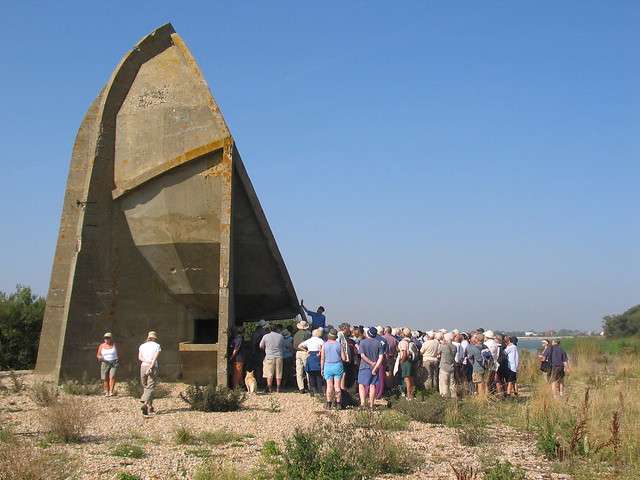
The Remembering 1916 – Life on the Western Front exhibition about the First World War in the year 1916 is being held at the Whitgift Exhibition Centre in south Croydon from 12 March to 31 August 2016. It is well worth seeing.

The exhibition covers many aspects of the war, from Gallipoli to Jutland to the home front to conscientious objectors, with extensive displays of uniforms, documents, photographs, art, memorabilia, weapons and other exhibits from Britain, France and Germany.
Full-size mock-ups using real objects portray rooms in a 1916 house, a horse-drawn wagon, a trench on the first day of the Somme, a fort at Verdun and a German machine gun position.
While there is nothing about sound mirrors there (as far as I could see), there is a display about Zeppelins.
Also of aviation interest is the display about an old boy of the school who was shot down (fatally) by the Red Baron.
The exhibition explicitly avoids getting bogged down in the politics and debates about who started the war or “lions led by donkeys”. In a refreshingly different approach, it attempts to give a 1916-eye view, and not simply see things through the lens of modern ideas about politics, class and gender – or a late-1980s TV sitcom.

The exhibition is not far from central Croydon: plenty of buses stop nearby.
Links














![The three early warning sound mirrors at Denge in Kent, (Photo: Michael Rich, 2004-09-12) [Photograph of the three sound mirrors at Denge]](/images/mirror/dungeness99.jpg)